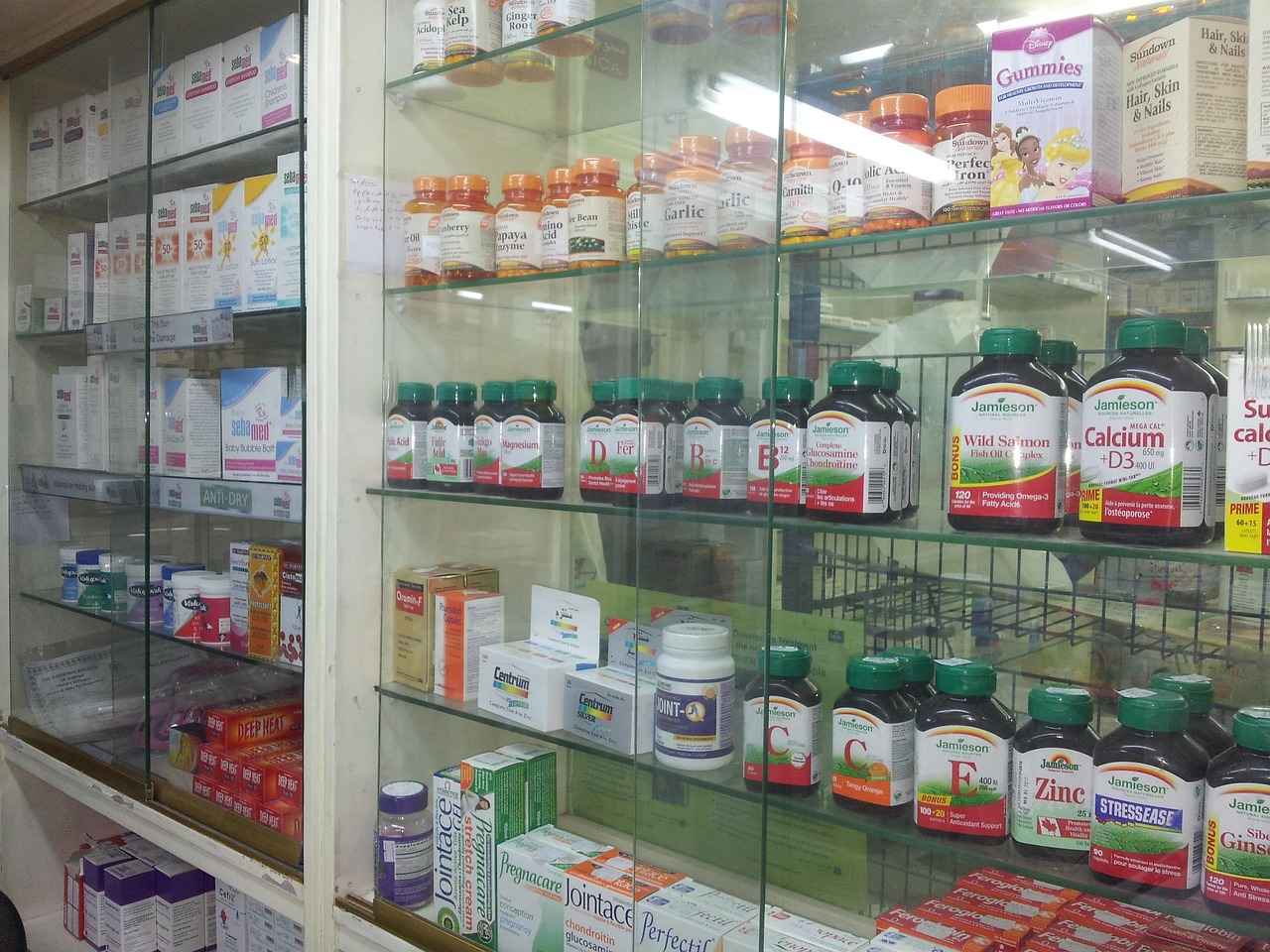This article provides an in-depth exploration of the West Bengal Health Scheme, focusing on its objectives, benefits, challenges, and the overall impact it has on the healthcare system and residents of West Bengal.
Overview of the West Bengal Health Scheme
The West Bengal Health Scheme was initiated to ensure that all residents have access to quality healthcare services. Its primary goal is to reduce the financial burden on families, particularly those from low-income backgrounds, by providing comprehensive health coverage.
Key Features of the Scheme
- Eligibility Criteria for Beneficiaries: Understanding who qualifies for the scheme is essential. The eligibility criteria include income limits, residency requirements, and demographic considerations.
- Income Limits for Participation: The scheme targets low-income families, with specific income thresholds determining eligibility to ensure support reaches the most vulnerable.
- Demographic Considerations: Special provisions are made for women, children, and the elderly, acknowledging their unique healthcare needs.
Benefits Offered by the Scheme
The benefits of the West Bengal Health Scheme are extensive, offering financial assistance for various medical services such as hospitalization, outpatient care, and preventive measures. This support significantly alleviates the financial stress related to healthcare.
Impact on Healthcare Accessibility
One of the most notable impacts of the West Bengal Health Scheme is the improvement in healthcare accessibility for marginalized communities. It has played a crucial role in enhancing hospital infrastructure, ensuring facilities are equipped to handle increased patient loads.
Challenges Faced by the Scheme
Despite its advantages, the scheme faces several challenges including resource allocation issues and the need for greater public awareness. Limited resources can hinder service quality, while many eligible individuals remain unaware of the benefits available to them.
Future Prospects of the West Bengal Health Scheme
Looking ahead, there is potential for the West Bengal Health Scheme to evolve. Future developments may include expanding coverage, improving service delivery, and leveraging technology to enhance patient experiences. Engaging local communities in the feedback process can also strengthen the scheme’s effectiveness.
Conclusion
The West Bengal Health Scheme is a vital initiative aimed at improving healthcare access and affordability for residents. While challenges remain, the scheme’s potential for growth and enhancement offers hope for a healthier future for all in West Bengal.

Overview of the West Bengal Health Scheme
The West Bengal Health Scheme is a transformative initiative launched by the government of West Bengal with the primary objective of providing comprehensive health coverage to its residents. This scheme aims to ensure that all individuals, especially those from economically weaker sections, have access to quality healthcare services without facing overwhelming financial burdens.
By addressing the healthcare needs of the population, the scheme plays a crucial role in improving overall health outcomes in the state. It not only facilitates access to medical services but also emphasizes the importance of preventive care and health education among the community. The West Bengal Health Scheme is designed to alleviate the financial strain that often accompanies medical treatment, thereby promoting a healthier society.
Key Features of the Scheme
- Eligibility Criteria: The scheme is targeted primarily at low-income families, with specific income limits set to determine eligibility. This ensures that the most vulnerable populations receive necessary support.
- Comprehensive Coverage: Beneficiaries are entitled to a wide range of medical services, including hospitalization, outpatient care, and preventive health measures, which are essential for maintaining good health.
- Demographic Considerations: Special provisions are made for women, children, and the elderly, recognizing their unique healthcare needs and ensuring that they receive appropriate care.
Impact on Healthcare Accessibility
One of the most significant impacts of the West Bengal Health Scheme is its role in enhancing healthcare accessibility for marginalized communities. By improving hospital infrastructure and reducing out-of-pocket expenses, the scheme ensures that quality healthcare is within reach for everyone, regardless of their financial situation.
In conclusion, the West Bengal Health Scheme is a crucial step towards building a healthier future for the state. By focusing on inclusivity and accessibility, it aims to create a robust healthcare system that caters to the needs of all residents, ultimately contributing to the overall well-being of the community.

Key Features of the Scheme
The West Bengal Health Scheme is a vital initiative designed to improve healthcare access for the residents of West Bengal. This section delves into the key features of the scheme, outlining its eligibility criteria, the benefits it offers, and the range of medical services covered.
To ensure that the benefits reach those who need them most, the scheme has specific eligibility criteria:
- Income Thresholds: The scheme primarily targets low-income families, with defined income limits determining eligibility.
- Residency Requirements: Applicants must be permanent residents of West Bengal to qualify for the scheme.
- Demographic Considerations: Special provisions are made for vulnerable groups, including women, children, and the elderly, recognizing their unique healthcare needs.
The West Bengal Health Scheme provides a comprehensive range of benefits aimed at reducing the financial burden of healthcare. Some of the key benefits include:
- Hospitalization Coverage: Financial assistance for inpatient treatments, ensuring that families do not face crippling medical bills.
- Outpatient Services: Coverage for outpatient consultations and treatments, promoting preventive healthcare.
- Preventive Health Measures: The scheme encourages regular health check-ups and vaccinations, thereby improving overall community health.
The scheme covers a wide array of medical services, which include:
- General Medicine: Treatments for common illnesses and conditions.
- Specialized Care: Access to specialists for chronic diseases and complex health issues.
- Emergency Services: Immediate medical assistance for accidents and emergencies.
In conclusion, the West Bengal Health Scheme stands as a beacon of hope for many families, ensuring that quality healthcare is not just a privilege for the wealthy but a right for all. By understanding the eligibility criteria, benefits, and services offered, residents can better navigate the healthcare landscape and take full advantage of this essential program.
Eligibility Criteria for Beneficiaries
Understanding who qualifies for the West Bengal Health Scheme is essential for maximizing its benefits. This scheme is designed to provide health coverage to those who are most in need, and several factors determine eligibility.
- Income Limits: The scheme primarily targets low-income families. To qualify, applicants must meet specific income thresholds set by the state government. These limits ensure that assistance is directed towards the most vulnerable populations, helping them access essential healthcare services without financial strain.
- Residency Requirements: To be eligible, beneficiaries must be residents of West Bengal. This requirement ensures that the scheme supports the local population and addresses the healthcare needs of the state’s residents effectively.
- Demographic Considerations: Certain groups, including women, children, and the elderly, may have additional provisions under the scheme. Recognizing their unique healthcare needs, the scheme aims to provide tailored support for these demographics, ensuring they receive the necessary medical attention.
Additionally, applicants may be required to provide documentation that verifies their income, residency, and demographic status. This documentation helps streamline the application process and ensures that only eligible individuals and families benefit from the scheme.
By understanding these eligibility criteria, potential beneficiaries can better navigate the application process, ensuring they secure the health coverage they need. This knowledge is vital for maximizing the benefits offered by the West Bengal Health Scheme, ultimately contributing to improved health outcomes across the state.
Income Limits for Participation
The West Bengal Health Scheme is a vital initiative aimed at providing healthcare support to low-income families. This scheme is particularly significant as it establishes specific income thresholds to determine eligibility, ensuring that the most vulnerable populations receive the necessary support they require to access healthcare services.
By setting these income limits, the scheme effectively targets households that struggle to afford medical expenses. The thresholds are designed to capture a wide range of low-income families, including those living below the poverty line, ensuring comprehensive coverage. This focus on financial vulnerability is crucial, as it allows the program to address the unique challenges faced by these families.
Furthermore, the income limits are periodically reviewed and adjusted to reflect the changing economic landscape and inflation rates. This dynamic approach helps maintain the scheme’s relevance and effectiveness, allowing it to adapt to the needs of the population it serves.
In addition to the income criteria, the scheme also considers other demographic factors, such as the number of dependents in a household and specific health conditions that may require additional support. This holistic approach ensures that assistance is not only based on financial need but also on the overall health and well-being of the family.
The implementation of income limits has led to a significant increase in the number of beneficiaries accessing healthcare services under the scheme. By prioritizing low-income families, the West Bengal Health Scheme not only alleviates the financial burden associated with medical care but also promotes better health outcomes for the community as a whole.
In conclusion, the income thresholds established by the West Bengal Health Scheme play a critical role in ensuring that healthcare support reaches those who need it most. By focusing on low-income families, the scheme is making strides toward a healthier and more equitable society.
Demographic Considerations
The West Bengal Health Scheme recognizes that certain populations have unique healthcare needs, necessitating tailored provisions to ensure equitable access to medical services. Specifically, women, children, and the elderly are highlighted as demographics that may benefit from additional support under the scheme.
- Women: Women often face specific health challenges, including reproductive health issues and higher rates of certain diseases. The scheme provides enhanced maternal health services, including prenatal and postnatal care, ensuring that women receive the necessary medical attention during critical stages of their lives.
- Children: Recognizing that children are particularly vulnerable, the scheme includes provisions for vaccinations, regular health check-ups, and nutritional support. This focus on pediatric care aims to promote healthy development and prevent long-term health issues.
- The Elderly: Older adults frequently encounter age-related health concerns, making it essential for the scheme to offer specialized services such as geriatric care, chronic disease management, and mental health support. These services are designed to improve the quality of life for elderly beneficiaries.
Additionally, the scheme acknowledges that these demographics may require financial assistance beyond what is typically offered. This includes covering costs for necessary medications, specialized treatments, and rehabilitation services, which can often be a financial burden for families.
In conclusion, by addressing the unique healthcare requirements of women, children, and the elderly, the West Bengal Health Scheme not only promotes health equity but also fosters a healthier and more resilient community. The targeted provisions ensure that vulnerable groups are not left behind, thereby enhancing overall healthcare outcomes in the state.
Benefits Offered by the Scheme
Benefits Offered by the West Bengal Health Scheme
The West Bengal Health Scheme is designed to provide a comprehensive safety net for residents, ensuring that essential healthcare services are accessible to all. The scheme’s benefits extend far beyond mere financial assistance, encompassing a wide range of medical services that cater to the diverse needs of the population.
- Hospitalization Coverage: One of the primary advantages of the scheme is its provision for hospitalization expenses. Beneficiaries can avail themselves of financial support for inpatient treatments, which includes costs associated with surgeries, medications, and other hospital services.
- Outpatient Care: The scheme also covers outpatient services, allowing individuals to seek medical consultations, diagnostic tests, and follow-up treatments without the burden of hefty out-of-pocket expenses.
- Preventive Health Measures: In an effort to promote overall health, the West Bengal Health Scheme emphasizes preventive care. This includes vaccinations, health check-ups, and screenings aimed at early detection and management of diseases.
- Specialized Treatments: The scheme provides access to specialized treatments for chronic illnesses, ensuring that individuals with long-term health conditions receive the necessary care without financial strain.
- Family Coverage: Families can benefit collectively under the scheme, which extends coverage to all eligible members, thereby promoting holistic health management.
In summary, the West Bengal Health Scheme is a vital initiative that not only alleviates financial burdens but also enhances the overall health and well-being of its beneficiaries. By covering a wide array of medical services, it plays a crucial role in ensuring that residents have access to the healthcare they need, when they need it.

Impact on Healthcare Accessibility
The West Bengal Health Scheme has emerged as a transformative initiative aimed at enhancing healthcare accessibility for marginalized communities throughout the state. By focusing on inclusivity and affordability, the scheme has made significant strides in bridging the healthcare gap that often leaves vulnerable populations behind.
One of the primary objectives of the scheme is to ensure that individuals from low-income backgrounds can access necessary medical services without facing crippling financial burdens. This is particularly crucial in a state where many families struggle to afford basic healthcare. By providing comprehensive health coverage, the scheme reduces the financial barriers that often prevent marginalized groups from seeking medical attention.
Key Benefits of the Scheme
- Expanded Access to Services: The scheme covers a wide range of medical services, including hospitalization, outpatient care, and preventive health measures, ensuring that essential health services are available to those who need them most.
- Community Health Programs: The initiative also emphasizes community health programs that educate and empower residents about their health, further promoting proactive healthcare practices.
Impact on Hospital Infrastructure
Moreover, the West Bengal Health Scheme has led to improvements in hospital infrastructure. With increased funding and resources, hospitals are better equipped to handle patient loads, ensuring that quality care is not compromised. This enhancement is particularly beneficial for remote areas where healthcare facilities were previously inadequate.
Conclusion
In conclusion, the West Bengal Health Scheme plays a vital role in improving healthcare accessibility for marginalized communities. By reducing financial barriers, expanding service coverage, and enhancing healthcare infrastructure, the scheme is making significant progress toward achieving equitable healthcare for all residents of West Bengal.
Improvement in Hospital Infrastructure
The West Bengal Health Scheme has played a pivotal role in transforming the state’s healthcare landscape. One of the most significant outcomes of this initiative is the marked . This enhancement is vital for ensuring that healthcare facilities can effectively manage an increasing patient load while delivering quality care.
Prior to the implementation of the scheme, many hospitals faced challenges such as outdated equipment, insufficient beds, and a lack of essential medical supplies. The scheme has addressed these issues by providing funding and resources aimed at upgrading facilities. As a result, hospitals are now equipped with modern technology and better medical equipment, which has significantly improved their operational capabilities.
- Increased Bed Capacity: Many hospitals have expanded their bed capacity, allowing them to accommodate a larger number of patients simultaneously. This is particularly crucial during peak periods, such as outbreaks or natural disasters.
- Modern Medical Equipment: The introduction of advanced medical devices has enhanced diagnostic and treatment capabilities, leading to better patient outcomes.
- Improved Sanitation and Safety Standards: The scheme has also focused on enhancing sanitation protocols and safety measures within hospitals, ensuring a safer environment for both patients and healthcare workers.
Furthermore, the scheme has facilitated the training of healthcare professionals, equipping them with the necessary skills to operate new technologies and improve patient care. This investment in human resources is essential for maintaining high standards in healthcare delivery.
In conclusion, the West Bengal Health Scheme’s contributions to hospital infrastructure are not only improving immediate healthcare services but also laying the groundwork for a more resilient healthcare system in the long term. By ensuring that hospitals are better equipped to handle increased patient loads, the scheme is ultimately enhancing the overall health and well-being of the state’s residents.
Reduction in Out-of-Pocket Expenses
The West Bengal Health Scheme has emerged as a pivotal initiative aimed at transforming the healthcare landscape for families across the state. One of its most significant impacts is the substantial reduction in out-of-pocket expenses associated with medical care. This financial relief is vital, especially for families who often grapple with the burden of healthcare costs.
By covering a considerable portion of medical expenses, the scheme effectively alleviates financial stress that many households experience when seeking necessary medical attention. Prior to the implementation of this scheme, families often found themselves in precarious situations, forced to choose between essential healthcare and other critical expenses such as education and housing.
Under this scheme, families can access a wide range of medical services without the constant worry of crippling costs. This includes not only hospitalization but also outpatient care, preventive treatments, and emergency services. The financial coverage extends to various medical procedures that were previously deemed unaffordable for many.
Moreover, the scheme has contributed to a broader cultural shift in how healthcare is perceived. With the reduction in out-of-pocket expenses, families are more likely to seek medical assistance promptly, leading to early detection and treatment of health issues. This proactive approach not only improves individual health outcomes but also contributes to the overall well-being of the community.
Despite the challenges that remain, such as ensuring all eligible families are aware of the scheme and can easily access its benefits, the West Bengal Health Scheme stands as a testament to the state’s commitment to improving healthcare accessibility. As it evolves, the potential for further reducing financial barriers in healthcare continues to grow, promising a healthier future for all residents.

Challenges Faced by the Scheme
Challenges Faced by the West Bengal Health Scheme
The West Bengal Health Scheme, despite its numerous advantages, encounters a variety of challenges that impede its effectiveness. Addressing these issues is crucial for the scheme to achieve its full potential and ensure that it serves the intended beneficiaries effectively.
- Resource Allocation Issues: One of the primary challenges is the limited resources available for the scheme. Inadequate funding can lead to insufficient healthcare services, affecting the quality and accessibility of medical care for beneficiaries. This can result in longer wait times, inadequate staffing, and limited availability of essential medical supplies.
- Public Awareness and Engagement: A significant barrier to the success of the West Bengal Health Scheme is the lack of public awareness. Many eligible individuals are unaware of the scheme’s existence, benefits, or the application process. This lack of information can lead to low participation rates, preventing those who need assistance from accessing the healthcare services available to them.
- Administrative Hurdles: The scheme also faces various administrative challenges, including bureaucratic inefficiencies and complex application procedures. These hurdles can discourage potential beneficiaries from applying and can delay access to necessary healthcare services.
- Equity in Service Delivery: Ensuring equitable access to healthcare services across different regions of West Bengal is another challenge. Geographical disparities can result in some areas being underserved, particularly in rural regions where healthcare facilities may be limited.
- Quality of Care: While the scheme aims to improve healthcare access, there are concerns regarding the quality of care provided. In some cases, the influx of patients due to the scheme may overwhelm healthcare facilities, leading to compromised service quality.
In conclusion, the West Bengal Health Scheme has the potential to significantly enhance healthcare access for its residents. However, to realize this potential, it is essential to address the challenges related to resource allocation, public awareness, administrative efficiency, equity, and quality of care. By tackling these issues, the scheme can better serve the needs of the population and improve health outcomes across the state.
Resource Allocation Issues
in the West Bengal Health Scheme present significant challenges that can undermine the overall effectiveness of this vital initiative. As the scheme aims to provide comprehensive healthcare coverage to its beneficiaries, the availability of adequate resources is crucial for ensuring quality services.
Limited resources can lead to a variety of issues, including:
- Inadequate Staffing: A shortage of trained healthcare professionals can result in longer wait times for patients and reduced quality of care.
- Insufficient Medical Supplies: Without adequate funding, hospitals may struggle to maintain essential medical supplies and equipment, which can hinder effective treatment.
- Overcrowded Facilities: Increased patient loads without corresponding resource allocation can lead to overcrowded hospitals, impacting patient experience and care quality.
Moreover, the impact on marginalized communities is profound. These communities often rely heavily on government schemes for healthcare access. When resources are limited, their healthcare needs may not be met adequately, leading to disparities in health outcomes.
To address these challenges, it is essential for the government to:
- Enhance Funding: Increasing the budget allocated to the West Bengal Health Scheme would enable better resource distribution and service quality.
- Implement Efficient Management Practices: Streamlining administrative processes can help ensure that resources are used effectively and reach those in need.
- Engage Community Feedback: Involving local communities in decision-making can provide insights into resource allocation and help tailor services to meet specific needs.
In conclusion, while the West Bengal Health Scheme holds great promise for improving healthcare access, addressing the is critical. By ensuring that adequate resources are available, the scheme can fulfill its objective of providing quality healthcare to all residents, particularly the most vulnerable populations.
Public Awareness and Engagement
is a crucial aspect of the West Bengal Health Scheme, as it directly influences the program’s effectiveness and reach. Despite the scheme’s numerous benefits, a significant number of eligible individuals remain unaware of the advantages and the application processes associated with it. This lack of awareness can severely limit participation and ultimately undermine the scheme’s objectives.
To enhance engagement and maximize the scheme’s impact, it is essential to implement a multi-faceted approach that includes:
- Community Outreach Programs: Organizing workshops and informational sessions in local communities can help educate residents about the scheme’s benefits and eligibility criteria. Collaborating with local leaders and healthcare providers can amplify these efforts.
- Utilizing Digital Platforms: Leveraging social media and dedicated websites can facilitate the dissemination of information. Regular updates, success stories, and FAQs can engage a broader audience and encourage participation.
- Feedback Mechanisms: Establishing channels for beneficiaries to share their experiences and suggestions can foster a sense of ownership and community involvement, leading to improved services and trust in the scheme.
Additionally, targeted campaigns focusing on specific demographics, such as women, children, and the elderly, can ensure that these groups are adequately informed about the unique provisions available to them. By addressing the specific needs and concerns of these populations, the scheme can enhance its accessibility and effectiveness.
In conclusion, raising awareness about the West Bengal Health Scheme is not merely an administrative task; it is a vital component that can significantly enhance healthcare access for all residents. By prioritizing public engagement and utilizing diverse strategies, the scheme can reach its full potential, ensuring that eligible individuals receive the support they need.

Future Prospects of the West Bengal Health Scheme
As we look forward, the West Bengal Health Scheme stands at a crucial juncture, poised for significant transformation. The potential for this scheme to evolve and expand is not just a possibility but a necessity in addressing the ongoing challenges faced by the healthcare system in the state. This evolution is vital for enhancing healthcare delivery and ensuring that all residents can access quality services without financial strain.
The scheme’s future could see an expansion of coverage to include a wider range of medical services, thereby catering to more diverse healthcare needs. By incorporating preventive care and wellness programs, the scheme can shift its focus from merely treating illnesses to promoting overall health and well-being among residents.
Moreover, integrating technology into the West Bengal Health Scheme could revolutionize service delivery. Implementing telemedicine platforms can facilitate remote consultations, making healthcare more accessible, especially for those in rural areas. This technological enhancement will not only streamline processes but also improve patient experiences by reducing wait times and increasing the efficiency of service provision.
Community engagement will play a pivotal role in the scheme’s success. By fostering collaboration between healthcare providers and local communities, the scheme can better understand and address the specific needs of its beneficiaries. Feedback mechanisms can ensure that the voices of residents are heard, leading to more tailored and effective healthcare solutions.
In conclusion, the West Bengal Health Scheme has a promising future, with ample opportunities for growth and improvement. By addressing current challenges and focusing on comprehensive healthcare delivery, the scheme can significantly enhance the quality of life for all residents of West Bengal.
Potential for Expansion and Enhancement
As the West Bengal Health Scheme continues to evolve, there is a significant opportunity for expansion and enhancement that can lead to improved healthcare outcomes for residents. The future developments of the scheme are poised to focus on several key areas:
- Broadening Coverage: One of the primary goals is to extend the coverage of the scheme to include more services and a wider range of conditions. This could mean incorporating mental health services, chronic disease management, and preventive care, ensuring that all aspects of health are addressed.
- Improving Service Delivery: Enhancing the efficiency of service delivery is crucial. This could involve streamlining the process for accessing healthcare services, reducing wait times, and ensuring that beneficiaries receive timely medical attention. Implementing a robust feedback mechanism can help identify bottlenecks and areas for improvement.
- Integrating Technology: The integration of technology into the healthcare system can significantly enhance patient experiences. This may include the use of telemedicine for remote consultations, electronic health records for seamless data sharing among healthcare providers, and mobile applications for easy access to health services.
- Community Engagement: Actively involving local communities in the planning and implementation of the scheme can lead to better alignment with their needs. Community feedback can be invaluable in shaping the program and ensuring it is responsive and effective.
In conclusion, the potential for expansion and enhancement within the West Bengal Health Scheme is vast. By focusing on broadening coverage, improving service delivery, integrating technology, and engaging communities, the scheme can significantly enhance the healthcare landscape in West Bengal. These developments not only promise to improve patient experiences but also aim to create a more efficient and effective healthcare system for all.
Role of Community Engagement
in the West Bengal Health Scheme is pivotal for its success and sustainability. By actively involving local communities in both the implementation and feedback processes, the scheme can be tailored to better meet the specific needs of those it aims to serve. This collaborative approach fosters a sense of ownership among community members, enhancing their commitment to the program.
Community engagement ensures that the voices of residents are heard, allowing for the identification of unique health challenges that may not be apparent to policymakers. When local individuals participate in discussions about healthcare services, they can provide valuable insights into cultural practices, prevalent health issues, and barriers to accessing care. This information is crucial for developing effective strategies that resonate with the community’s needs.
Moreover, involving local stakeholders can lead to improved trust in the healthcare system. When community members see their input valued and reflected in health policies, they are more likely to utilize available services. This increased utilization can ultimately lead to better health outcomes, as more individuals seek preventive care and treatment when needed.
To facilitate this engagement, the scheme can utilize various methods, such as community meetings, surveys, and focus groups. These platforms not only gather feedback but also educate residents about the services offered under the scheme, ensuring they are well-informed about their options.
In conclusion, the integration of community feedback into the West Bengal Health Scheme is essential for its effectiveness. By prioritizing community engagement, the scheme can adapt and evolve, ensuring that it continues to meet the needs of all residents, particularly those from marginalized backgrounds. This collaborative effort can lead to a healthier population and a more robust healthcare system in West Bengal.
Frequently Asked Questions
- What is the West Bengal Health Scheme?
The West Bengal Health Scheme is a government initiative aimed at providing comprehensive health coverage to residents of West Bengal, ensuring they have access to quality healthcare services without facing financial hardships.
- Who is eligible for the scheme?
Eligibility is primarily determined by income limits, residency requirements, and demographic factors. Low-income families, women, children, and the elderly are given special consideration to ensure they receive the necessary support.
- What types of medical services are covered?
The scheme covers a wide range of medical services, including hospitalization, outpatient care, and preventive health measures, making it easier for families to access essential healthcare without incurring heavy costs.
- How does the scheme reduce out-of-pocket expenses?
By covering a significant portion of medical costs, the West Bengal Health Scheme helps alleviate the financial burden on families, allowing them to seek necessary treatments without the stress of high expenses.
- What challenges does the West Bengal Health Scheme face?
Some challenges include resource allocation issues, lack of public awareness, and administrative hurdles that can impact the effectiveness and reach of the scheme.
- What are the future prospects of the scheme?
The West Bengal Health Scheme has the potential to expand its coverage, improve service delivery, and integrate technology to enhance patient experiences, thereby addressing current challenges effectively.


























































